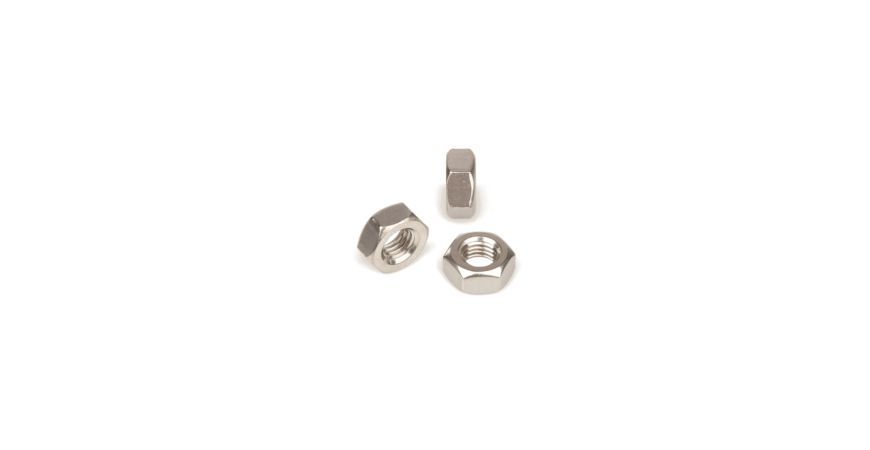
Grades of Stainless Steel A2 & A4 in relation to fasteners
There are several different grades of stainless steel, and I want to look at the properties of two, namely A2 and A4 and discuss where they can be used.
General
Also known as inox steel from the French “inoxydable”, stainless steel is a steel alloy with a minimum of 10.5 % chromium. The chromium helps the alloy to resist staining and corrosion. The main point to make here is that it helps resist corrosion, it does not prevent it. Perhaps we could say “A highly corrosion-resistant grade of steel”
Stainless steel differs from carbon steel by the amount of chromium present. Unprotected carbon steel rusts readily when exposed to air and moisture. This iron oxide film (the rust) accelerates corrosion by forming more iron oxide. Stainless steels contain sufficient chromium to form a passive film of chromium oxide, which prevents further surface corrosion and blocks corrosion from spreading into the metal’s internal structure.
Passivation only occurs if the mixture of chromium is high enough.
Other alloying elements are added to enhance the structure and properties such as formability, strength and cryogenic toughness. These include metals such as:
- Nickel
- Molybdenum
- Titanium
- Copper
Non-metal additions are also made, the main ones being:
- Carbon
- Nitrogen
Stainless steel, when used for fasteners (nuts, bolts, screws etc) have British standards associated with them. BS EN ISO 3506 ( Fasteners. Mechanical properties of corrosion-resistant stainless steel fasteners. Bolts, screws and studs with specified grades and property classes) replaces BS6105. Part 1 covers bolts, screw and studs, part 2 nuts and part 4 tapping screws.
To all intents and purposes, when we see type A2 stainless steel, we can also call it Type 304. Likewise, A4 grade can be called type 316 – but more:
A2 Stainless Steel
A2 > Type 304 can also be called 18/8 because it ‘approximately’ contains 18% Chromium and 8 % nickel
A2 (304, 18/8, EN 1.4301) is an austenitic steel and is non-magnetic. The chromium provides a corrosion and oxidation resistance, however, it can tarnish. It is immune to foodstuffs, sterilizing solutions, most organic chemicals and dyestuffs, also a wide variety of inorganic chemicals. As such it is used extensively for sinks, tabletops, stoves, refrigerators, pots, pans dairy equipment, brewing industry, fruit industry, food processing plants, dye tanks, pipelines, and more
A4 Stainless Steel
For marine conditions, you need more corrosion resistance. Adding molybdenum (2-3%) to the mix provides this extra cover – and gives us the A4 grade
A4 > Type T316 (Spec: EN 10088-3:2005, 1.4401 Steel With 16% chromium, 10% nickel and 2% molybdenum) grade is also austenitic, non-magnetic and suitable for all the situations as A2 BUT has the added advantage of being suitable for marine solutions. Often called Marine Grade stainless steel. The molybdenum content increases the corrosion resistance to withstand attack from many industrial chemicals and solvents and of course, chlorides (Salt!). Used in the production of inks, photographic chemicals, surgical implants, and the marine environment
Are A2 & A4 Stainless Steel Magnetic?
Although A2 and A4 are classed as non-magnetic it is not the whole story. Steels are either austenitic or ferritic - terms that are about the configuration of the atoms within the steel. Austenitic refers to atoms being face-centred cubic in nature, Ferritic atoms are body-centred cubic. I won't go into details, but mechanical deformation of the stainless steel can cause local changes to the structure from austenitic to ferritic and is why, on occasion, stainless steel can be magnetic - and is the source of much confusion.
Mechanical Properties
Both A2 and A4 grades come in three property classes: 50 (soft), 70 (cold-worked) & 80 (high-strength) – the most common of which is the 70 class which is cold drawn” from bar stock.
These classes have different mechanical properties. For example, A2-70 has a tensile strength of 700 Nmm-2 and 450 Nmm-2 proof stress.
| Property class | BOLTS Tensile Strength Rmf (MPa) | BOLTS Stress at 0.2% no-proportional elongation Rpf (MPa) | BOLTS Elongation after fracture A (mm) | NUTS Stress under proof load Sp (MPa) |
|---|---|---|---|---|
| 50 | 500 | 210 | 0.6d | 500 |
| 70 | 700 | 450 | 0.4d | 700 |
| 80 | 800 | 600 | 0.3d | 800 |
| 100 | 1000 | 800 | 0.2d | 1000 |
L?
You will sometimes see an 'L' added to the end of the T316 / T304 designations. So that would be T316L or T304L. The 'L' refers to low carbon. So the alloy has less carbon than standard which helps when welding the steels. It does have slightly lower mechanical properties though
Summary
In summary, stainless steel fasteners should be used when you need to minimise the risk of corrosion. A2 is a very good grade for this, but when you need that little bit more, for example in a marine environment, then it is best to go for A4
